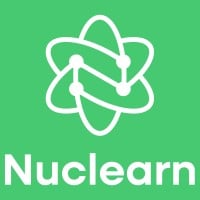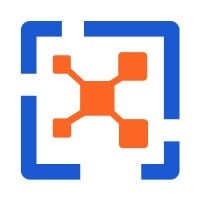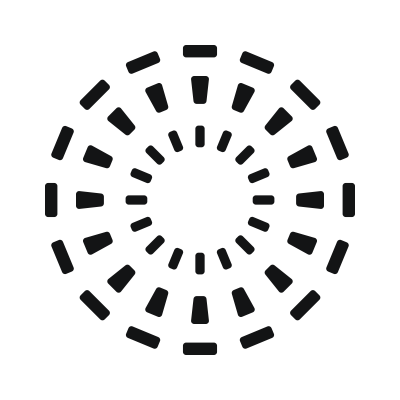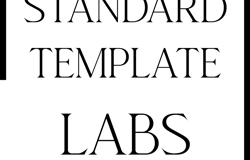Why Nuclearn.ai
Nuclearn.ai builds AI‑powered software for the nuclear and utility industries—tools that keep critical infrastructure reliable, efficient, and safe. Our platform integrates AI‑driven workflow, documentation, and research automation and is already used at 60+ nuclear reactors across North America. We’re now looking for a hands‑on, systems‑minded VP of Engineering to turn that momentum into disciplined, reliable delivery across software, hardware/infrastructure, cybersecurity, and quality.
You’ll own the engineering strategy end‑to‑end, shape the org, raise the bar on reliability and security, and ship features and integrations that matter to real plants.
Eligibility
U.S. citizenship or permanent residency (green card) is required due to DOE export compliance.
You’ll report to the founders and lead a multi‑discipline organization spanning Software, Hardware/Infrastructure, Cybersecurity, and Quality Assurance (QA/V&V). You’ll define the engineering strategy, hire and coach leaders, establish world‑class practices, and deliver production‑grade AI in a regulated, customer‑integrated environment. This is a working VP role where you’ll set architecture, get into the weeds on incidents and design reviews, and model how we blend modern software engineering with production‑grade AI and secure deployments.
What you’ll ownPeople & org- Design the org across backend, frontend, platform/SRE, hardware/infra, cybersecurity, and QA; define interfaces and ownership boundaries that mirror the architecture.
- Hire, onboard, and coach ICs and managers; set clear growth paths, performance expectations, and succession plans.
- Run the rooms: weekly planning, architecture/design sessions, AI+UX charrettes, post‑incident RCAs, incident drills, and cross‑team release reviews.
- Build an AI‑enabled engineering culture—safe and effective use of AI pair programming, code generation, test synthesis, and design assistance.
- Be hands-on in the codebase, especially early on - contributing directly to critical features, reviews, and infrastructure while building and mentoring the team.
- Own SDLC and release management (branching, feature flags, safe rollbacks) across services and clients.
- Institute typed APIs and schema‑migration discipline (backfills, idempotency, partitioning).
- Drive Sentry triage and error‑budget/SLOs; implement retries, back‑pressure, DLQs, and circuit breakers.
- Embed AI in the toolchain: automated test generation, static‑analysis + AI code review prompts, release‑note drafting, log summarization, and postmortem drafting.
- Define and publish customer‑visible reliability metrics (uptime, success rates, SLA adherence).
- Own the strategy for edge/on‑prem and cloud/hybrid deployments common in utility environments (including constrained/air‑gapped scenarios).
- Lead build‑vs‑buy for edge connectors/appliances and plant‑side integrations; oversee vendor selection, BOMs, lifecycle management, and spares.
- Establish infrastructure standards: high‑availability topologies, disaster recovery, backup/restore, configuration management, and environment parity.
- Ensure robust networking patterns for utility/OT integration (segmentation, least privilege, managed ingress/egress, secure update channels).
- Introduce telemetry for fleet health (hardware status, throughput, queue depth) and capacity planning.
- Embed secure SDLC and change control that satisfy SOC 2/ISO 27001 without slowing delivery; partner with leadership on roadmap‑aligned controls.
- Define deployment hardening for customer sites (key management, identity/SSO, network trust boundaries, audit trails, least‑privilege access).
- Support vendor risk reviews, DPAs in MSAs, and enterprise security questionnaires.
- Build a lightweight but rigorous QMS for software and hardware/edge artifacts: test plans, change control, and release sign‑offs.
- Expand automated test coverage (unit, contract, integration, E2E) and non‑functional testing (load, resilience, failover).
- Define quality metrics: defect escape rate, MTTR, change failure rate, test reliability, and verification completeness.
- Ensure evidence capture for audits and customer onboarding (test records, validation summaries, configuration baselines).
- Lead robust integrations with DevonWay, Maximo, and other enterprise systems.
- Build safe, traceable re‑processing (versioned transforms, replayable queues, full lineage).
- Stand up retrieval pipelines for in‑product AI.
- Rethink UX with AI: design copilot‑style flows in CAP AI and AtomAssist that propose, simulate, explain, then apply - with human‑in‑the‑loop gates and diff‑based approvals.
- Partner with Design to create AI‑first UI patterns (natural‑language to action, draft‑to‑diff, semantic search across customer content) aligned to utility workflows and approvals.
- Join key utility calls to scope integrations, demo AI‑enhanced capabilities, and close feedback loops.
- Translate constraints into backlog, SLAs, rollout plans, and clear acceptance criteria.
- Partner with Product on quarterly planning and the “toward 100% automation” roadmap.
- Work with Customer Success on renewals (license entitlements, usage, uptime) and measure time saved and AI suggestion acceptance as value proof.
- Present progress and risks to founders and the board with clear, actionable metrics (DORA, SLOs, security posture, AI‑assist KPIs, QA/V&V status).
- Reliability: Cut a noisy class of Sentry errors by 30%+ via task idempotency, DLQs, and AI‑assisted log triage.
- Automation guardrails: Roll out “simulate → review → apply” gating for CAP automations with dry‑run diffs, explanations, and full audit trails.
- Data pipeline: Deliver a OneNote → AtomAssist connector: tabular ingest, strict schema validation, safe reprocessing, lineage.
- Hardware/infra: Define the appliance reference architecture (secure update channel, health telemetry, DR), pilot at a customer site, and publish runbooks.
- Cyber: Support upcoming ISO-27001 and SOC-2 audits.
- QA: Establish the QMS skeleton (requirements trace, test plan templates, release checklist), and add automated regression to CI.
- Org: Fill priority roles (e.g., Full‑Stack, SRE/Platform, Security Engineer, QA) and level up existing teams with crisp ownership.
- Have led 5 - 20+ engineers across multiple disciplines at a startup serving regulated enterprises.
- Are a player‑coach: you can dive into FastAPI/React/Postgres/Celery, reason about infra topologies, and still scale the org.
- Care about correctness and safety: typed contracts, migrations with backfills, idempotent jobs, V&V that catches sharp edges.
- Have shipped AI‑powered features and know how to measure and improve trust (evals, guardrails, human‑in‑the‑loop).
- Are comfortable with utility customers - able to demo, clarify constraints, and negotiate pragmatic workarounds.
- Communicate clearly under pressure and keep teams focused when the alerts page lights up.
- Experience with AI Agent Ops, RAG/data pipelines, vector search, feature stores, and LLM training operations (prompt/versioning, evals, monitoring).
- Background in nuclear/utility or other safety‑critical domains (aviation, med‑device, rail, O&G).
- SOC 2/ISO 27001 experience; familiarity with utility security expectations.
- Familiarity with Maximo, DevonWay, Microsoft 365 integrations.
Frontend: React, JavaScript, HTML/CSS
Backend: Python (FastAPI)
Data/Infra: PostgreSQL, SQLite; Redis, RabbitMQ, Celery; Docker/Podman, Kubernetes; GitHub Actions
Observability: Sentry, Netdata; (growing OpenTelemetry footprint)
Quality: PyTest, Cypress; CI‑driven test automation and V&V evidence capture
Security/Cyber (representative): dependency/SBOM scanning, SIEM/EDR, secrets management, vulnerability management, identity/SSO
Edge/On‑prem (where applicable): hardened images, secure update channels, fleet telemetry, backup/restore, DR runbooks
- Base salary: $216k - $233k
- Equity: 0.16% - 0.40%
- Bonus: 15%
- Benefits: Unlimited PTO, health/dental/vision insurance
Full‑time, salaried. Hybrid at Phoenix HQ (≥80% in‑office; Wednesdays remote). Occasional travel to customer sites, conferences, or auditors as needed.
How we hire (fast, respectful, practical)- 20‑min founder intro to trade context and assess mutual fit
- Leadership & systems deep dive (org design, SDLC/reliability, cyber/QA strategy)
- Team panel + working session (design review, incident/RCA, or architecture exercise)
- Final discussion on 90‑day plan, success metrics, and board‑level communication
We aim to move from first chat to decision quickly.
Ready to lead engineering across software, hardware/infrastructure, cybersecurity, and quality to keep critical infrastructure running? We’d love to meet you.
Top Skills

What We Do
With over 60 reactors around the world relying on our technology, Nuclearn is built on one simple idea: nuclear deserves better tools. Our team—made up of nuclear professionals and engineers—set out to modernize the industry by applying AI to some of its most critical, and often outdated, processes.
“We saw this massive gap,” said Bradley Fox, CEO and co-founder. “You’ve got the tech to split atoms, but a lot of the supporting work is still done with decades-old systems. We knew AI could help streamline that complexity—making things safer, faster, and more efficient. It’s a win for the plants, and for the future of clean energy.”
Jerrold Vincent, our CFO and co-founder, adds: “Back in 2016, we recognized the potential for AI to support nuclear—not just in cutting costs, but in preparing the next generation of workers. That’s why we started Nuclearn. We believe AI is one of the best tools we have to keep nuclear strong for the long haul.”
The software we’ve built isn’t generic. It’s nuclear-specific, pre-trained, and ready to go—designed by people who’ve lived the process and know exactly what this industry needs.









